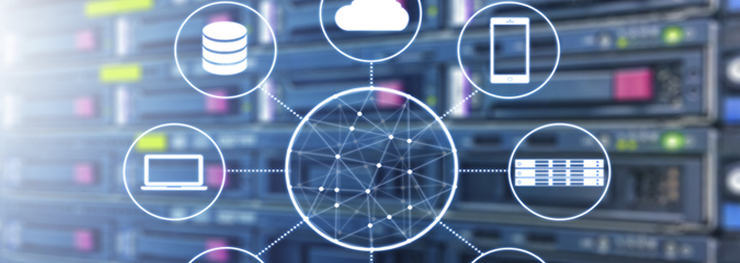
Your Network's Edge®
Blog Post
You are here
Telco NaaS: Empowering Carriers to Monetize their Network
The term NaaS (Network as a Service) dates back to the late 2000s, when other 'XaaS' acronyms, such as IaaS and SaaS, became widely used. NaaS shares similar attributes and benefits with other XaaS services, including the flexibility to customize and configure resources based on business needs, the support of pay-per-use models, the ability to provide remote managed services to meet service-level agreements and the abstraction of complexity. But unlike IaaS and SaaS, NaaS does not serve as a substitute for the network infrastructure; instead, it is designed to enhance flexibility and automation within the existing network framework.
NaaS is currently being promoted by Over-the-top (OTT) NaaS providers that offer services off overlay networks. OTT NaaS providers require specialized networking gear to ramp up customer traffic to their cloud PoPs, allowing them to gain network visibility and implement controls. Telecom carriers, on the other hand, can offer NaaS services by actively monitoring their network and applying control in-line, in the underlay network.
The scope of NaaS includes several methods for activating network capabilities, according to customer needs:
Direct Customer Request: Customers can instantiate network capabilities on-demand by placing direct requests. For example, a customer planning an increased network activity might request a ”bandwidth on demand” service via a cloud dashboard. This approach requires customers to be aware of their network needs and take action accordingly.
Service Request: A customer service request automatically translates to network capabilities. For example, a service that requires the network to meet a specific end-to-end latency budget. This requirement will be interpreted to, and enforced by, traffic engineering.
Automated Network Operations: Networks can dynamically optimize themselves based on real-time conditions and predictions. This optimization process includes the continuous monitoring of network performance; tracking service consumption and customer behavior patterns; assessing trends in network, service, and customer dynamics and dynamically adjusting relevant capabilities to fulfill customer intent and service demand. Customers benefit from this approach without requiring them to provide explicit requests or rely on network expertise.
To grasp the potential and benefits of NaaS, it's essential to explore the full spectrum of network capabilities and identify their practical applications. Here are some illustrative examples:
Bandwidth on-demand: NaaS allows organizations to dynamically adjust their network bandwidth based on immediate requirements.
Service-based Traffic Engineering: NaaS can be employed to fine-tune traffic engineering policies to meet specific service prerequisites.
Cyber Attack Mitigation: NaaS can swiftly block traffic to mitigate cyberattacks and safeguard network integrity.
Traffic Steering: Predictive analytics in NaaS can facilitate traffic reroute to preempt network congestion or potential failures.
Path Selection: NaaS can intelligently determine the optimal network path to a specific cloud by considering the unique service requirements and customer attributes.
RAD prioritizes the enablement of telecom carriers to introduce NaaS, by adding automation into their networks. This empowers them to leverage the inherent capabilities of their networks to roll out new revenue-generating services. Here's what telecom carriers should consider with regards to OTT NaaS:
-
Avoid Vendor Lock-in: Overlaying business customers’ traffic onto an OTT provider’s cloud prevents carriers from applying intelligence to such customer traffic and in effect bounding them to the OTT provider's services.
-
Universal Service Applicability: OTT frameworks force traffic to be anchored to cloud PoPs and hence are suitable mainly for cloud-bound traffic. Carrier NaaS, on the other hand, caters to all types of business services.
-
Network Control Placement: Decisions concerning where to set network controls are critical. For instance, it's ideal to thwart cyber attack traffic right at the network boundaries to prevent malevolent traffic from compromising the entire network. Hence, OTT NaaS that anchors all business traffic to OTT cloud PoPs can’t inherently be optimized.
-
Leverage Automation for Operations: The dual utility of automated network oversight and control not only facilitates NaaS-based revenue generation but also ensures smooth, automated operations for Communication Service Providers (CSPs) networks.
RAD currently implements NaaS via RADinsight, an edge threat intelligence solution that reveals valuable network and security insights that are provided to businesses as a service. These insights can be leveraged to make informed decisions and streamline operations. The automated network controls within RADinsight will ultimately enable businesses to distance themselves from simple network operations entirely, allowing them to concentrate instead on achieving desired network outcomes.
RAD will be discussing Telco NaaS and showcasing RADinsight at the Global NaaS Event by MEF in Dallas, Texas, 2-4 October, 2023. We hope to see you there!
RAD is a global leader in carrier ethernet solutions and data communications, dedicated to empowering telecom carriers with cutting-edge network performance monitoring and diagnostics tools. With a rich portfolio that includes advanced edge IoT, 5g gateways, and ethernet demarcation devices, we are at the forefront of networking on the edge.

